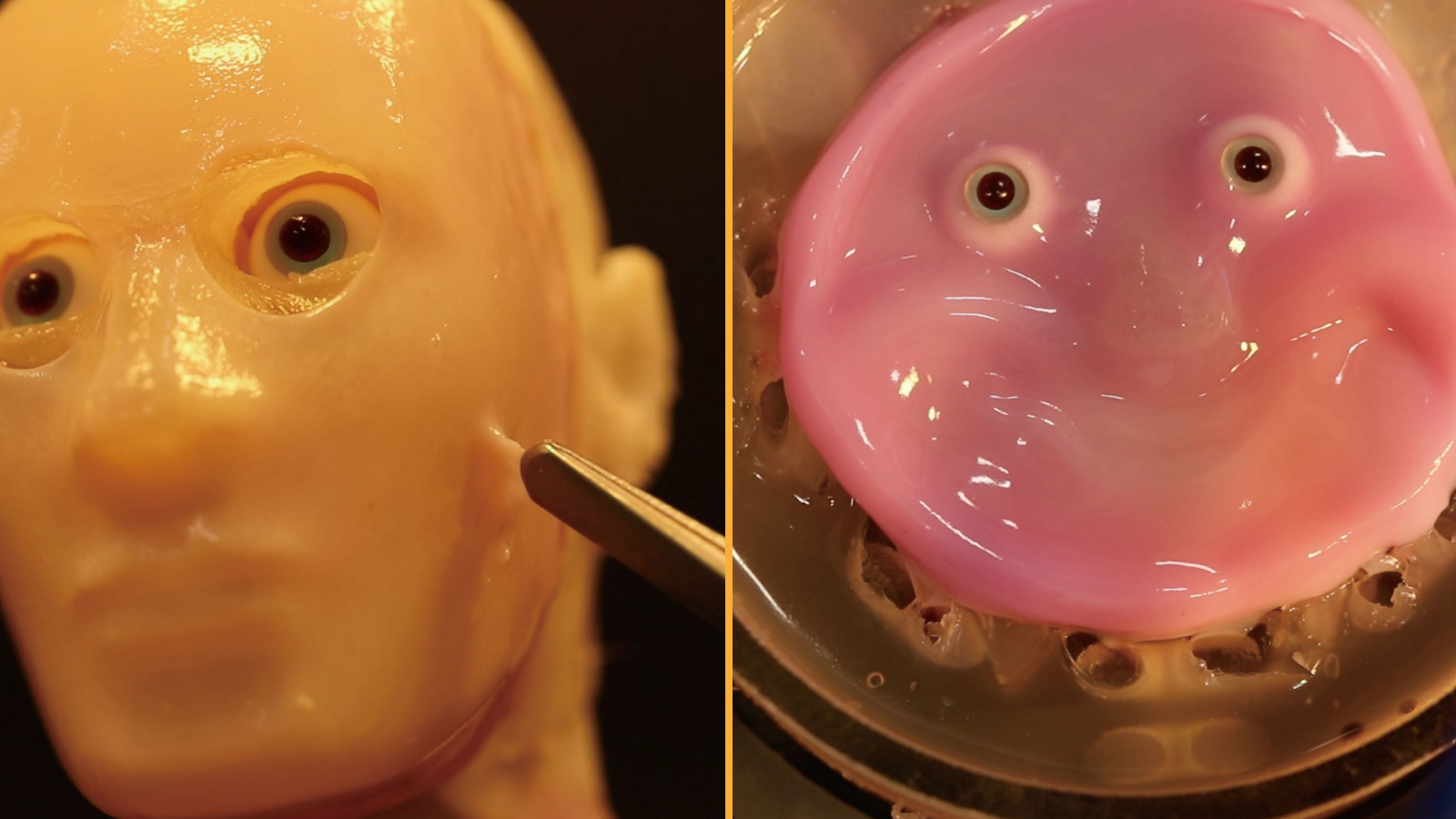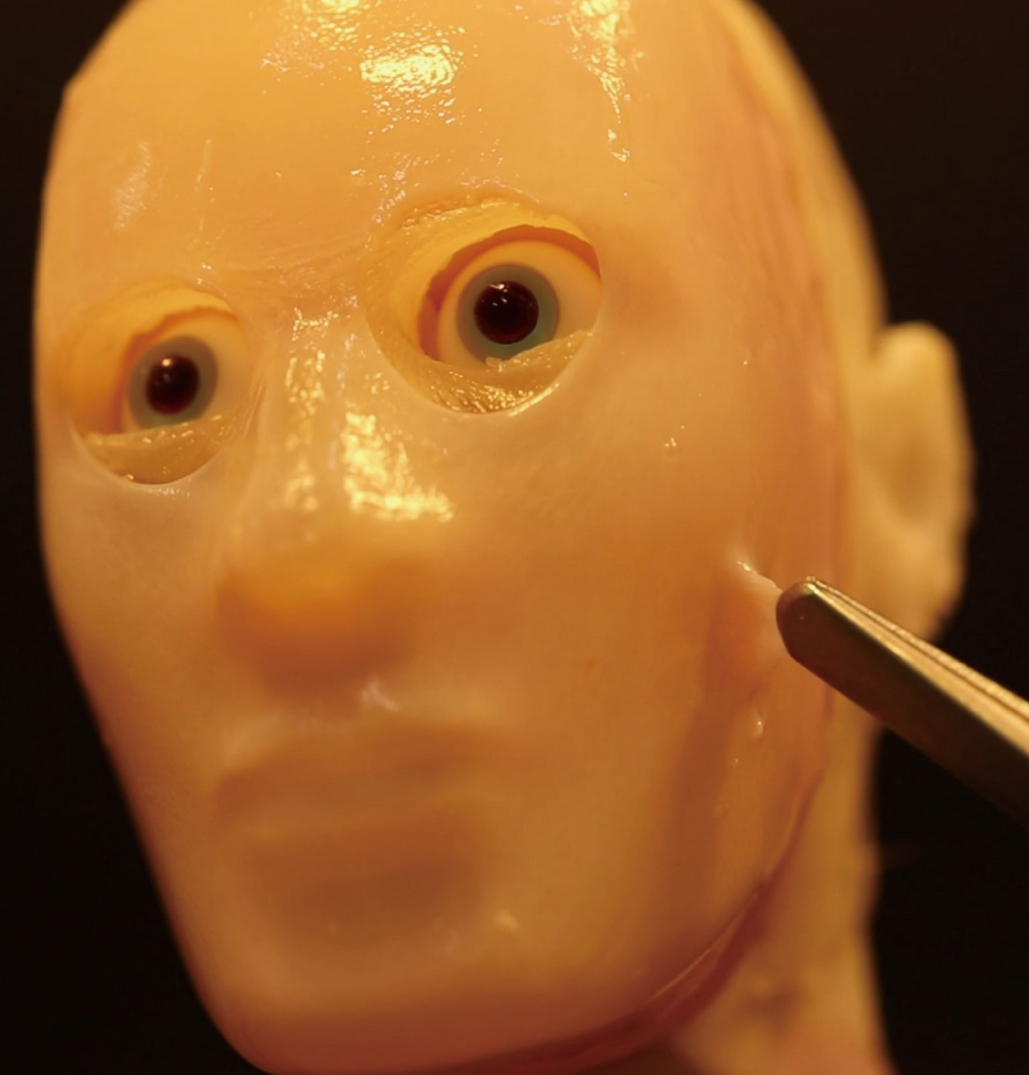
Robots of the future could be wrapped in lifelike skin that can repair itself, in a similar way to the way human skin heals, thanks to a novel approach involving cultured skin cells.
The skin will also appear more lifelike thanks to a new way of attaching it to the robot's skeleton as well the fact that it can repair any cuts or scrapes by itself — researchers said. They published their findings June 25 in the journal Cell Reports Physical Science.
Artificial skin has long been touted as a way to make robots appear more human-like — and cultured skin appears more lifelike than synthetic materials such as latex. But without the right kind of adhesive approach, artificial skin can sag off a robot's frame in a visually disturbing manner.
Related link: Watch Boston Dynamics' newest Atlas robot wake up in the creepiest way possible
Robotics researchers have previously tried to solve the problem of artificial skin sagging off the metallic frame by pinning it down with "anchors", hooked or mushroom-shaped structures. This prevents the skin from shifting around atop the robot’s frame, but the adhesive structures can stick out as lumps under the skin — compromising its human-like appearance.
In the new study, researchers pioneered a method whereby the robot's skeleton contains tiny holes into which the artificially grown skin can extend v-shaped hooks known as "perforation-type anchors". These keep the artificial skin stuck to the robot while maintaining a smooth and flexible surface.
Making robotic skin more lifelike
The artificial skin is layered on top of a robot treated with a water-vapor plasma to make it hydrophilic — in other words, to ensure that liquids are attracted to the surface. This means the cultured skin's gel is pulled deeper into the holes to cling more closely to the surface of the robot.
One of the main benefits of this new skin is that it would allow robots to operate alongside humans without experiencing undue wear and tear. Small tears or similar defacements could be repaired without needing to manually repair the robots, the team said. They did not, however, measure how quickly the artificial skin healed after sustaining damage.
In one demonstration, researchers recreated the way skin changes when a human smiles. This involved connecting the artificial skin to the robotic face with a sliding layer of silicone underneath. This leads to"inflating cheeks", as the muscles tighten and cause the skin to push up at either corner of the mouth. With the perforation anchors, the skin could seamlessly fit the 3D mold of a face, with no protruding bolts or hooks.
The researchers also compared the artificial skin applied to a surface with and without the perforation-based anchors. On anchorless surfaces, the skin shrank by as much as 84.5% over the course of seven days, compared with 33.6% on a surface with 0.04-inch (1 millimeter) anchors. Skin contraction on a robot would separate the skin from the robot’s inner frame, ruining its lifelike appearance and potentially causing damage to the skin layer. Skin on surfaces with larger 0.1-inch (3 mm) and 0.2-inch (5 mm) anchors lasted even longer, at 26.4% and 32.2% respectively).

The path to building humanlike androids
Shoji Takeuchi, a researcher on the study at the Institute of Industrial Science (IIS), the University of Tokyo, told Live Science several steps will still need to be taken before robots are likely to be wearing skin using the team’s methods.
"Firstly, we need to enhance the durability and longevity of the cultured skin when applied to robots, particularly by addressing issues related to nutrient and moisture supply," he said. "This could involve developing integrated blood vessels or other perfusion systems within the skin."
"Secondly, improving the mechanical strength of the skin to match that of natural human skin is crucial. This involves optimizing the collagen structure and concentration within the cultured skin."
Takeuchi also noted that to be truly functional, artificial skin will eventually have to convey sensory information such as temperature and touch to any robot wearing it, as well as be resistant to biological contamination.
The scientists said that research into the field could further our understanding of how facial muscles convey emotion — which could, in turn, drive breakthroughs in surgery to treat conditions like facial paralysis or expand the capabilities of cosmetics and orthopedic surgery. A better grasp of skin adhesion could also prevent needing any v-shaped holes in future robotic frames.







